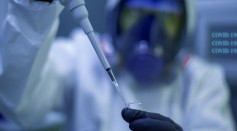bacterium

Unusual Bacterium From Stray Cat Bite Leads to Unprecedented Infection in UK Man
Bacteria-Based Microrobots Developed to Help Battle Cancer
Vision Loss in COVID-19 Patient: Case Study Provides Better Insight on Possible Connection Between the Two
Unique Family of Bacteria Infects Human Body Successfully by Hiding From Immune System, Study Reveals

COVID-19 Vaccines: Immunologists Explore Possibility of Developing Drugs for Enhanced, More Effective Vaccination
Chimpanzee-Killing Disease Linked by Researchers to New Species of Bacterium
Dangerous Pathogens Utilize This Sophisticated Machinery to Infect Hosts
Bacterium That Causes Bubonic Plague Still Found Everywhere
Bacteria With Same Genotype Show Different Phenotypes
How A Parasite Became a Power House—The Tale of Mitochondria
Most Popular

How Technology Is Changing the Real Estate Industry?

How a Plant-Based Diet Can Protect Against Breast Cancer: Insights from Nutrition Research

Study Reveals High Turnover in Scientific Research Careers: What This Means for Future Scientists

Why It's So Difficult to Lose Weight: The Biological Explanation Behind Obesity





